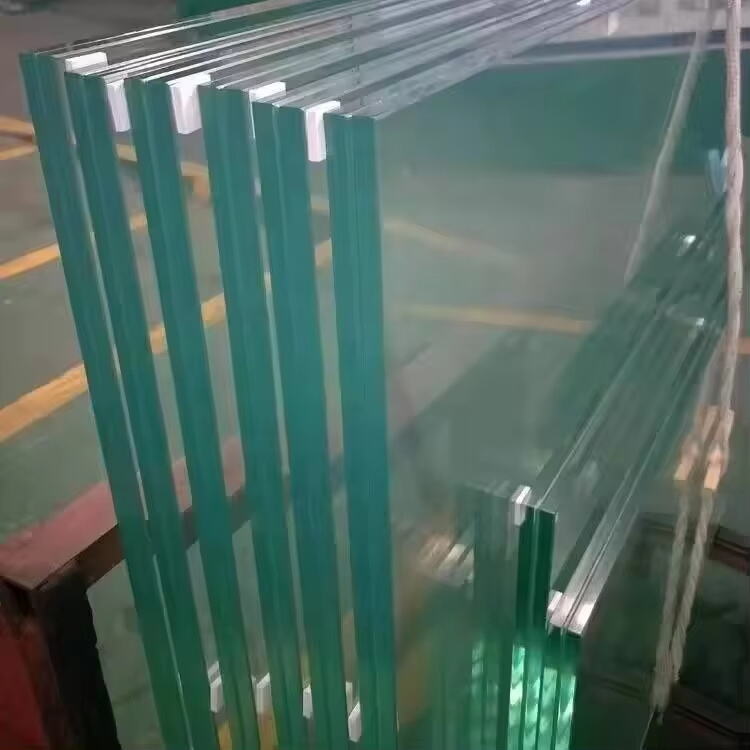Enhancing Natural Light and Brightness
Maximizing Sunlight Exposure with Clear Glass
Bright, welcoming spaces start with letting in as much sunlight as possible through clear glass. During the day, big windows and glass doors work wonders for bringing in natural light. The bonus? Not only does it make the architecture look better, but it also fills rooms with sunlight that boosts everyone's mood while cutting down on electric lights. Mirrors placed just right can bounce around those sunbeams too, making even the darkest corners feel brighter than before. For spots where regular windows won't do, skylights or those high-up clerestory windows become real lifesavers for extra light. All these tricks light up the space beautifully and blend what's outside with what's inside in a way that feels completely natural.
Creating Visual Spaciousness Through Transparency
Adding clear glass components really changes how we see space, creating the impression that rooms are bigger than they actually are. Glass lets light through and gives us those great views without walls getting in the way, basically erasing where one area ends and another begins. Spaces just seem to flow better when there's glass involved, so whole rooms don't feel cramped or closed off. From what I've seen, people tend to perceive spaces as more roomy because glass reflects things around it, making depth seem greater while still looking beautiful. When installing glass railings or dividing walls, we keep everything open but still define separate zones, so no part of the house feels stuffy or disconnected. These kinds of transparent designs work well for practical living too since they combine usefulness with good looks, resulting in homes that look modern yet stay functional for daily life.
Modernizing Home Aesthetics with Clear Glass
Sleek Contemporary and Minimalist Designs
Modern designs really love clear glass these days. It just works so well with those straight lines and empty spaces we see in contemporary buildings everywhere. Because it's see through, architects can slip it into all sorts of designs without messing things up visually. For homes specifically, big windows made from clear glass are super common nowadays along with sliding doors and glass walls between rooms. These features make houses feel way better looking than they would otherwise. Pairing this stuff with metal frames or wooden accents creates that minimalistic vibe people go crazy for nowadays. Spaces end up feeling both stylish and not too fancy at the same time. The combination actually makes rooms deeper visually while keeping everything looking connected rather than random bits thrown together.
Blending Indoor and Outdoor Design Styles
Glass has this amazing quality of making the boundary between inside and outside almost disappear, which architects love as a design trick. When used properly, it lets light pour through spaces without obstruction, blending what's happening indoors with whatever nature has going on outdoors. Many modern homes now feature large glass sections because they really do transform how people experience their living areas. The view becomes part of daily life when clear glass is incorporated thoughtfully. Take those big windows that stretch from floor to ceiling or sliding doors that swing wide open to reveal backyard oases or pretty patios. These features don't just look good they actually change how we interact with our surroundings, bringing the fresh air and greenery right into our living rooms while keeping everything looking sleek and contemporary.

Improving Energy Efficiency and Sustainability
Low-E Glass for Thermal Performance
Low E glass is pretty amazing stuff for making homes more energy efficient. The trick lies in that super thin metal layer on the surface which bounces back infrared light. What does this mean? In winter months, it keeps warm air inside where it belongs instead of letting it escape through windows. Come summertime, it pushes away unwanted solar heat before it ever gets into the house. Homeowners who install Low E glass often see their utility bills drop quite a bit over time. And let's not forget about what happens when less energy gets used overall. Fewer fossil fuels burned means cleaner air for everyone. Pretty simple math really - better insulation equals money saved and planet protected at the same time.
Reducing Energy Consumption with Smart Glass
Smart glass tech has really changed how buildings handle energy these days. These materials can actually respond to changes in light and temperature around them, which makes them pretty amazing for cutting down on power costs. Take electrochromic glass as an example it knows when to darken or lighten depending on how much sun is shining through, so it helps control indoor temperatures without relying so much on AC systems. As we move forward, what we're seeing with smart glass is going to keep transforming residential architecture. Homeowners want not just better insulation but also something that looks good and reacts naturally to its surroundings. That combination of practicality and style is exactly why this technology continues gaining popularity across different markets.
Toughened Glass for Impact Resistance
Toughened glass stands out when it comes to resisting impacts and keeping homes safe. Manufacturers create this type of glass by first heating regular glass to really high temperatures and then cooling it down super fast. The result? Glass that's roughly five times stronger than what we normally see in windows and doors. For places where breakage is common concern like bathrooms or near entry points, toughened glass becomes the go to material. When looking at how toughened glass stacks up against regular glass, there's no contest. Standard glass tends to shatter easily and leaves sharp edges everywhere after breaking. Toughened glass holds up much better under stress and even if it does break, it cracks into small pieces rather than dangerous shards. Most homeowners who care about their family's safety opt for toughened glass installations, especially in kitchens and children's play areas where accidents happen more frequently.
Manufacturing Process: Toughened glass undergoes a heating and rapid cooling process that enhances its strength.
Strength Comparison: Toughened glass is five times stronger than standard glass, improving safety in high-risk areas.
Laminated Glass for Enhanced Security
Laminated glass really boosts security because it makes break-ins way less likely to happen. Basically, what we're talking about here is glass made from several layers stuck together, which gives it some serious strength against impacts and stuff trying to get through. The big plus? Even when this kind of glass does crack or shatter, those layers stay stuck together instead of flying apart. So burglars find themselves facing a mess they can't just grab and pull out. That means folks inside stay safe even during an attempted break in.
Break-in Reduction: Laminated glass's multiple layers offer increased resistance to forced entry attempts.
Security Scenarios: Laminated glass is beneficial in vulnerable areas, such as windows and doors, prone to break-ins.
Versatility in Design Applications
Flexible Use in Architectural Elements
Glass has become pretty much essential in architecture these days because of how flexible it really is. We see it everywhere from towering office buildings to small family houses, where it just blends right in while letting lots of daylight inside. Architects all over the globe keep finding new ways to incorporate clear glass into their projects, mainly because it looks great and helps people feel connected to what's happening outside. Take those big glass walls on commercial buildings for instance they give workers amazing views which definitely makes the office atmosphere better. And let's not forget about the way sunlight pours through glass panels during the day, transforming interior spaces into brighter, more inviting areas that somehow seem bigger than they actually are.
Adaptable Interior Features like Partitions and Shelving
Clear glass has become really important in today's interior design because it works so well for things like room dividers and shelf units. When we talk about glass partitions specifically, they help manage spaces better since they keep everything feeling open but still separate different zones. That's why many people choose them for their office layouts or home spaces these days when they want both flexibility and good looks. Glass shelves bring another dimension to rooms too. They look fancy on walls and let displays stand out without blocking natural light from coming through. Take those floating shelves made of thick clear glass for example – they look super modern and clean while actually holding books or decorative items. Basically, clear glass just adds that extra something special to interior spaces where form meets function in a way that feels both practical and stylish at the same time.
Creating Seamless Indoor-Outdoor Connections
Unobstructed Views for Natural Scenery
Clear glass makes all the difference when it comes to letting in those amazing views and tons of natural light, which is why so many homeowners are going for this look these days. When designers include things like big windows and sliding glass doors, rooms just feel more spacious and part of the outside world. People actually find their homes more beautiful this way, plus there's something really good for the mind about being close to nature. Studies have shown that looking at green spaces helps lower stress levels, and anyone who lives near a garden or park knows exactly what I'm talking about. That peaceful feeling we get from seeing trees and sky through large windows creates a calm environment where everyone can relax better.
Designing Natural Transitions with Glass Walls
Glass walls have become a key feature when architects want to blend indoor and outdoor areas naturally. Many different building styles incorporate glass walls because they look good and help people move through spaces without feeling like they're crossing boundaries. Look at any modern home with well placed glass walls and you'll see how designers bring together separate areas into one cohesive whole. Think about those living rooms that open right onto patios or those breakfast nooks with views of gardens outside – glass just makes everything feel connected. What's interesting is how smart positioning allows homeowners to enjoy privacy while still maintaining that connection with nature. Some houses even use frosted or tinted glass in certain spots to control visibility without losing that open feel. This approach works wonders across all sorts of buildings beyond just residential properties too.
FAQ on Enhancing Natural Light with Clear Glass
Why is clear glass considered ideal for maximizing sunlight exposure?
Clear glass allows sunlight to penetrate interiors efficiently, boosting brightness and creating inviting spaces without heavy reliance on artificial lighting.
How does clear glass contribute to visual spaciousness?
Its transparency fosters an illusion of largeness, promoting seamless flow and unobstructed views that dissolve boundaries between areas.
What are the benefits of using Low-E glass and smart glass technologies?
Low-E glass enhances thermal performance by reflecting infrared light, while smart glass adjusts tint based on sunlight levels to manage heat gain, both improving energy efficiency.
What makes toughened and laminated glass safer options?
Toughened glass offers superior impact resistance, being five times stronger than standard glass, while laminated glass's multi-layer composition reduces break-in attempts.
How do clear glass partitions and shelving enhance interior design?
Clear glass partitions maintain openness while dividing spaces, and shelving adds elegance without obstructing light flow, both blending functionality with style.
Table of Contents
- Enhancing Natural Light and Brightness
- Modernizing Home Aesthetics with Clear Glass
- Improving Energy Efficiency and Sustainability
- Versatility in Design Applications
- Creating Seamless Indoor-Outdoor Connections
-
FAQ on Enhancing Natural Light with Clear Glass
- Why is clear glass considered ideal for maximizing sunlight exposure?
- How does clear glass contribute to visual spaciousness?
- What are the benefits of using Low-E glass and smart glass technologies?
- What makes toughened and laminated glass safer options?
- How do clear glass partitions and shelving enhance interior design?


